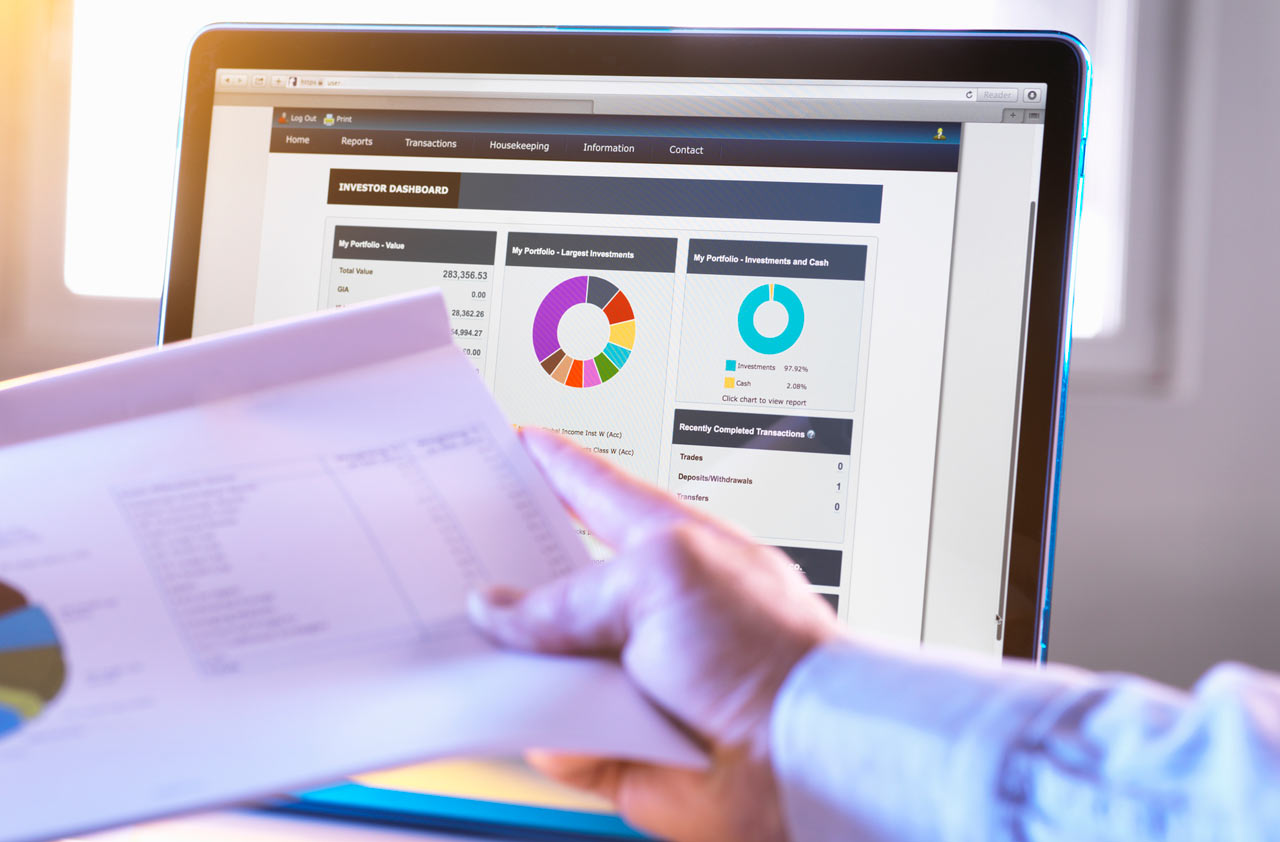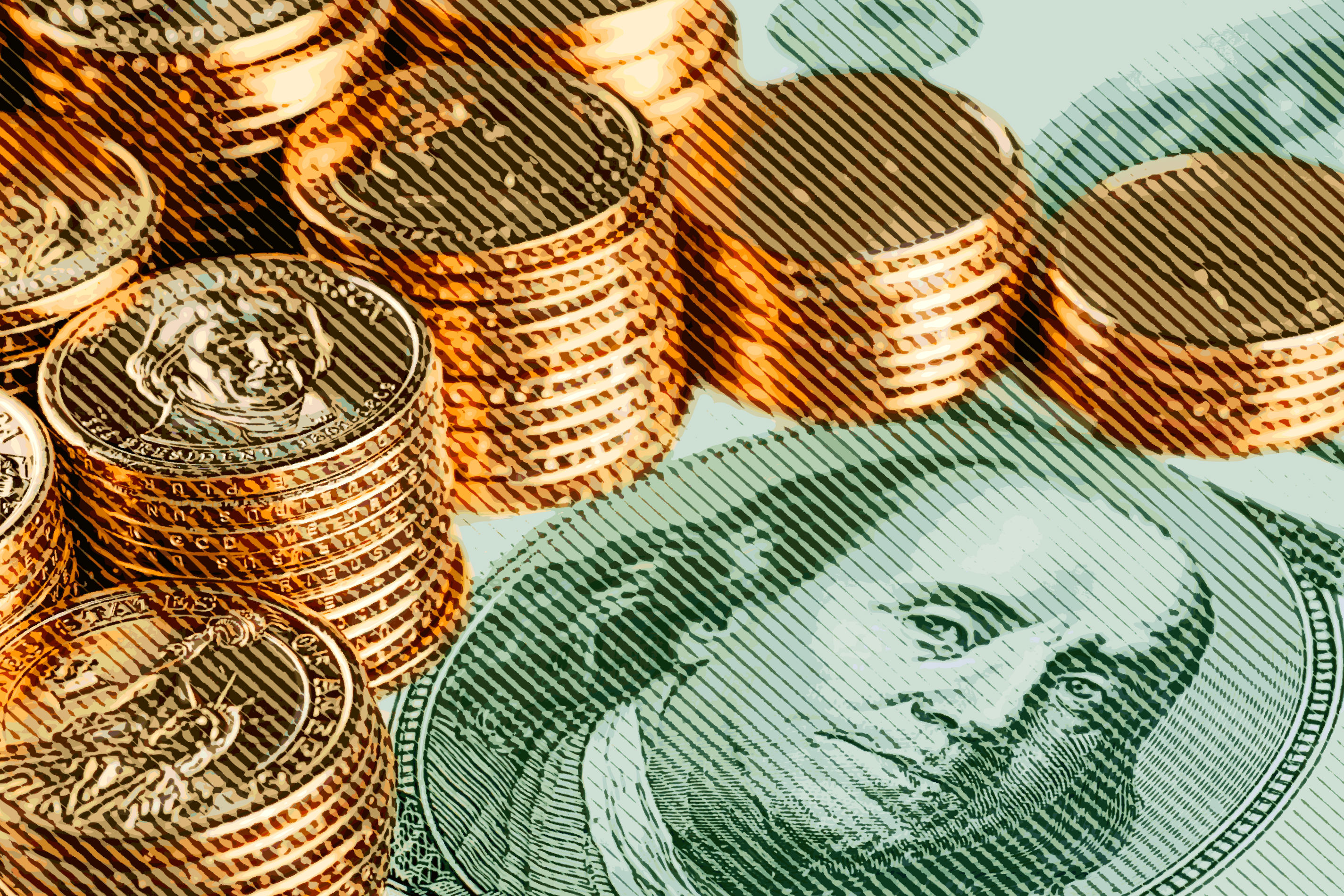Get Your Retirement Portfolio in Fighting Shape
These low-cost, risk-conscious funds can help your nest egg withstand the market's toughest blows.


Wake up calls are never pleasant, but this one was particularly harsh: Over the course of just nine trading days in late January and early February, U.S. stocks dropped 10% as investors fretted over a government report showing higher than expected wage inflation. The plunge wiped out stock market gains for the year and chalked up one of the swiftest corrections in recent decades.
Investors tried to settle back into the dream world that dominated recent years, where stocks kept hitting new highs, volatility was at record lows and there was barely a hint of inflation. But the alarm bells kept ringing. In late March, fears of a trade war between the U.S. and China sent stocks skidding again. And while stocks plunged, the bonds that form the core of many retirees’ portfolios didn’t live up to their safe-haven reputation. The Bloomberg Barclays U.S. Aggregate Bond index fell sharply during the stock market downturn and ended the first quarter down 1.5%.
Are you awake yet? Good. It’s time to get up and whip your portfolio into shape for the challenges to come, which may include more wild market swings, higher inflation and lower returns.
From just $107.88 $24.99 for Kiplinger Personal Finance
Become a smarter, better informed investor. Subscribe from just $107.88 $24.99, plus get up to 4 Special Issues

Sign up for Kiplinger’s Free Newsletters
Profit and prosper with the best of expert advice on investing, taxes, retirement, personal finance and more - straight to your e-mail.
Profit and prosper with the best of expert advice - straight to your e-mail.
That doesn’t mean you should abandon your thoughtfully constructed investment mix and yank money out of stocks. But it does mean that you should consider stock funds that can help mitigate steep market slides and bond funds that can weather higher inflation and rising interest rates (which push bond prices down). And it means ensuring that your investment portfolio is globally diversified, with holdings that can shine when U.S. stocks and bonds tank.
Retirees with the most plain-vanilla portfolios—such as those with core holdings that closely track Standard & Poor’s 500-stock index and the U.S. Aggregate Bond index—may be in particular need of a portfolio boot camp, advisers say. Yes, a 60% stock, 40% bond U.S.-centric portfolio has been a great place to be for decades, delivering average rolling five-year returns close to 10% since 1955, according to Litman Gregory Asset Management. But with U.S. stocks looking richly valued and rising rates threatening bonds, “we very much believe that a retiree or a traditional balanced-portfolio investor should really be diversifying away from core U.S. stock and bond holdings,” says Jeremy DeGroot, Litman Gregory’s chief investment officer. The firm’s projection of future annual returns for that traditional 60/40 portfolio, DeGroot says, is “in the 2% range.”
To win a place in retirees’ portfolios, of course, funds should provide much more than just diversification. For retirees, “capital preservation is one of the key guiding principles,” says Jim Lowell, editor in chief of the Fidelity Investor newsletter. “You want to invest in managers whose track records show they’ve been able to stare down multiple bear markets.”
Fees, which take a bite directly out of fund returns, are also key. Choosing lower-cost funds “is a way to improve returns in good times and bad,” says Russ Kinnel, director of manager research at investment-research firm Morningstar.
Ready for some portfolio strength training? With the help of fund analysts and financial advisers, we have selected a dozen low-cost, risk-conscious mutual funds that can give your portfolio the resilience to withstand the market’s toughest blows.
How to Own Stocks With Less Stress
Richard Howell, 57, spends a couple of hours each day studying his stock-heavy portfolio—and lately, he has seen some bloodbaths. “It’s gut-wrenching some days to look at all the red,” says Howell, a lawyer in Houston, Texas. There are days, he says, when all of his holdings post losses, and he has lost as much as 4% of his portfolio value in a single day. “I’m nervous about the market and have been for a couple of years,” says Howell, who plans to retire in about five to 10 years. “It’s been going up a long time.”
Howell is not alone. “Almost everybody’s concerned about a market crash,” says Rick Kahler, of Kahler Financial Group in Rapid City, S.D. “I’m asked about that in just about every meeting.”
Most people in or near retirement need a healthy slug of stocks to help their portfolios keep pace with inflation and reduce the risk that they’ll outlive their savings. But if all your holdings are moving in sync and your stomach is churning, you could benefit from broader diversification.
One place to start: stock funds that can cushion the worst stock market slides—such as those focused on high-quality companies with the potential to increase their dividends. “I love dividend growth for retirees,” Kinnel says, because it has some “nice defensive characteristics.” Companies with clean balance sheets that can consistently raise their dividends won’t be the highfliers when the market is on a tear, but they do provide some protection in market downturns. And while high-yielding stocks can be hit hard when interest rates rise, stocks with more modest but growing payouts tend to hold up well in rising-rate periods and can also help offset inflation.
T. Rowe Price Dividend Growth (PRDGX), a member of the Kiplinger 25—the list of our favorite no-load mutual funds—is a reasonably priced choice with a proven track record. Over the long term, it has been less volatile than its large-blend fund peers, according to Morningstar. The fund focuses on dividend payers with relatively consistent earnings and cash flow, and such companies “act as a shock absorber when either markets or the economy become more volatile,” says manager Tom Huber, who has been at the helm since 2000. His current favorite hunting grounds, he says, include the financial sector, which can benefit from rising rates as well as deregulation. The fund charges fees of 0.64% annually.
Vanguard Dividend Appreciation exchange-traded fund (VIG), another strong, low-cost dividend-growth option, charges just 0.08% annually. The fund tracks the Nasdaq U.S. Dividend Achievers Select index, which includes stocks that have boosted their dividends for at least 10 consecutive years but excludes real estate investment trusts and companies with poor dividend-growth prospects. The fund has held up well in tough times—in 2008, for example, it beat its average peer by more than 10 percentage points.
Another way to tone down your stock allocation’s gyrations: a low-volatility fund. The iShares Edge MSCI Minimum Volatility USA ETF (USMV), for example, tracks an index designed to limit exposure to common risk factors, big sector weightings and more-volatile holdings. “Not surprisingly, the portfolio incurs less volatility as well,” says Todd Rosenbluth, senior director of ETF and mutual fund research at investment-research firm CFRA. The fund, which charges 0.15% annually, has delivered five-year annualized returns of 11.5%, in line with the category average, but with significantly less volatility.
Invest Globally
You know it’s a good idea to spread your bets by incorporating overseas holdings into your portfolio. And it’s particularly important now, many advisers say, because U.S. stocks appear richly valued, and there are better bargains to be had overseas. But if the core of your foreign-stock allocation is a large-company, developed-market fund, that’s “only giving you a modest amount more diversification,” Kinnel says, because it’s focused on the same sort of global players that likely already dominate your U.S. stock portfolio.
So where can you find true global diversification—without plunging headlong into emerging-markets small caps or other risky waters? Vanguard Global Minimum Volatility Fund (VMVFX) holds U.S. and international stocks that are expected to generate less volatility than the market. The fund, which charges 0.25% annually, uses quantitative models to screen stocks in the FTSE Global All Cap index and build a low-volatility portfolio of more than 400 holdings. To cut volatility even further, the fund hedges most of its foreign-currency exposure back to the U.S. dollar. Although it may lag when markets are roaring, “this fund is going to be much less volatile when markets are going down,” says Dan Wiener, editor of The Independent Adviser for Vanguard Investors newsletter.
Kiplinger 25 member Fidelity International Growth (FIGF) has also proven less volatile than its average peer over the past three and five years. Jed Weiss, who has run the fund since its 2007 launch, has a strong track record of losing significantly less than peers in deep market downdrafts, Lowell says. The fund, which charges fees of 1.03% annually, focuses on companies with strong multiyear growth potential and pricing power as well as attractive valuations based on Fidelity’s earnings forecasts.
Tame Bond Market Risks
When David Honcik was rebalancing his portfolio recently, he knew he needed to shift some money from stocks into bonds—but he wasn’t particularly fond of the idea. “I don’t really like fixed-income investing, but I do it because it’s supposed to be good for us,” says Honcik, 59, an engineer in San Diego who plans to retire in the next five years or so. He had already seen some of his longer-term municipal-bond holdings get hit hard as rates climbed, and in addition to rising interest rates, he was concerned about inflation and the paltry yields available on higher-quality bonds.
Although you may have to hold your nose, focus first on core bond funds that will actually behave like bonds—providing ballast for your portfolio in rough markets. One conservative choice with reasonable costs is Baird Aggregate Bond (BAGSX). The fund, which charges fees of 0.55% annually, avoids making bets on the direction of interest rates—keeping its duration, or interest-rate sensitivity, close to its benchmark, the Bloomberg Barclays U.S. Aggregate Bond index. All securities in the fund must be investment grade at the time of purchase, and the managers avoid derivatives, leverage and foreign-currency exposure. “It’s a very straightforward approach,” says Mary Ellen Stanek, one of the fund’s managers and managing director at Baird. “One of our investors calls it ‘sleep insurance.’ ” The “what you see is what you get” strategy has paid off over the long term. The fund has outpaced more than 60% of peers in the intermediate-term bond category over the past 10 and 15 years.
Another solid core bond option is Dodge & Cox Income (DODIX). Its highly experienced management team tilts the portfolio toward corporate bonds and historically has tended to keep duration shorter than its benchmark, the U.S. aggregate bond index. “Dodge & Cox, in strategy and personnel, is tremendously stable,” Kinnel says. The fund charges fees of 0.43% annually and has beaten nearly 90% of its intermediate-term bond peers over the past decade.
Once you’ve built a strong fixed-income core, consider spreading your bond bets around the globe. Along with diversification, international bond funds offer some protection against rising U.S. rates, Kahler says. Kiplinger 25 member Fidelity New Markets Income (FNMIX) is an emerging-markets bond fund that tends to keep the majority of assets in U.S.-dollar-denominated bonds. Manager John Carlson “has been through more bear markets and government coups than most people on the planet and has managed to deliver remarkable returns and yields in a very well-diversified portfolio,” Lowell says. The fund yields 4.8% and charges 0.82% annually.
Another source for decent yield—with rising-rate protection thrown in—is the floating-rate fund category. These funds focus on loans that banks make to non-investment-grade companies. Yields on the bank loans float higher as lending rates climb. Floating-rate funds’ return potential is comparable to high-yield bond funds, DeGroot says, but with less credit risk. Fidelity Floating Rate High Income (FFRHX) is one of the more conservative funds in the category. The fund charges fees of 0.7% annually and yields roughly 4%. “It’s one of the few bond funds that actually benefits from a rising-rate environment while simultaneously giving you a very healthy yield,” Lowell says.
Retirees concerned about inflation should also consider a fund focused on Treasury inflation-protected securities, whose principal is tied to inflation. But most of these funds come with significant interest-rate risk. One solution: Vanguard Short-Term Inflation-Protected Securities ETF (VTIP), which limits rate risk by investing only in TIPS with maturities under five years. The fund is one of the cheapest in its category, charging annual fees of 0.06%.
Money that you plan to spend within the next couple of years deserves special consideration. Once you’ve stashed some short-term cash in savings accounts, certificates of deposit and money market funds, consider high-quality, low-cost short-term bond funds such as Vanguard Ultra Short Term Bond (VUBFX) or Vanguard Short-Term Tax-Exempt (VWSTX). These conservatively managed options charge expenses of 0.20% and 0.19%, respectively. And over time, Wiener says, these funds should be more rewarding than money market funds. They’ll “falter initially as rates go up and then start earning a higher and higher income stream,” he says.
As for Honcik, the San Diego engineer, he wound up with a little of everything when he rebalanced his portfolio. He now has a floating-rate fund, a TIPS fund and a short-term bond fund, in addition to Dodge & Cox Income, which he had already owned. Such a smorgasbord approach, advisers say, may be the best way for near-retirees and retirees to protect their portfolios—and make an unappetizing market more palatable.
Profit and prosper with the best of Kiplinger's advice on investing, taxes, retirement, personal finance and much more. Delivered daily. Enter your email in the box and click Sign Me Up.

-
 Should You Renew Your CD?
Should You Renew Your CD?With rate cuts impacting earnings, we examine if now is a wise time to renew CDs.
-
 7 Ways to Plan Now to Save on Medicare IRMAA Surcharges Later
7 Ways to Plan Now to Save on Medicare IRMAA Surcharges LaterUnderstand the critical two-year lookback period and why aggressive planning before you enroll in Medicare is the most effective way to minimize IRMAA.
-
 Law Reversal Looming? Trump Eyes 2026 Gambling Winnings Tax Change
Law Reversal Looming? Trump Eyes 2026 Gambling Winnings Tax ChangeTax Deductions It's no secret that the IRS is coming after your gambling winnings in 2026. But how long will that last?
-
 The 5 Best Actively Managed Fidelity Funds to Buy and Hold
The 5 Best Actively Managed Fidelity Funds to Buy and Holdmutual funds Sometimes it's best to leave the driving to the pros – and these actively managed Fidelity funds do just that, at low costs to boot.
-
 The 12 Best Bear Market ETFs to Buy Now
The 12 Best Bear Market ETFs to Buy NowETFs Investors who are fearful about the more uncertainty in the new year can find plenty of protection among these bear market ETFs.
-
 Don't Give Up on the Eurozone
Don't Give Up on the Eurozonemutual funds As Europe’s economy (and stock markets) wobble, Janus Henderson European Focus Fund (HFETX) keeps its footing with a focus on large Europe-based multinationals.
-
 Vanguard Global ESG Select Stock Profits from ESG Leaders
Vanguard Global ESG Select Stock Profits from ESG Leadersmutual funds Vanguard Global ESG Select Stock (VEIGX) favors firms with high standards for their businesses.
-
 Kip ETF 20: What's In, What's Out and Why
Kip ETF 20: What's In, What's Out and WhyKip ETF 20 The broad market has taken a major hit so far in 2022, sparking some tactical changes to Kiplinger's lineup of the best low-cost ETFs.
-
 ETFs Are Now Mainstream. Here's Why They're So Appealing.
ETFs Are Now Mainstream. Here's Why They're So Appealing.Investing for Income ETFs offer investors broad diversification to their portfolios and at low costs to boot.
-
 Do You Have Gun Stocks in Your Funds?
Do You Have Gun Stocks in Your Funds?ESG Investors looking to make changes amid gun violence can easily divest from gun stocks ... though it's trickier if they own them through funds.
-
 How to Choose a Mutual Fund
How to Choose a Mutual Fundmutual funds Investors wanting to build a portfolio will have no shortage of mutual funds at their disposal. And that's one of the biggest problems in choosing just one or two.